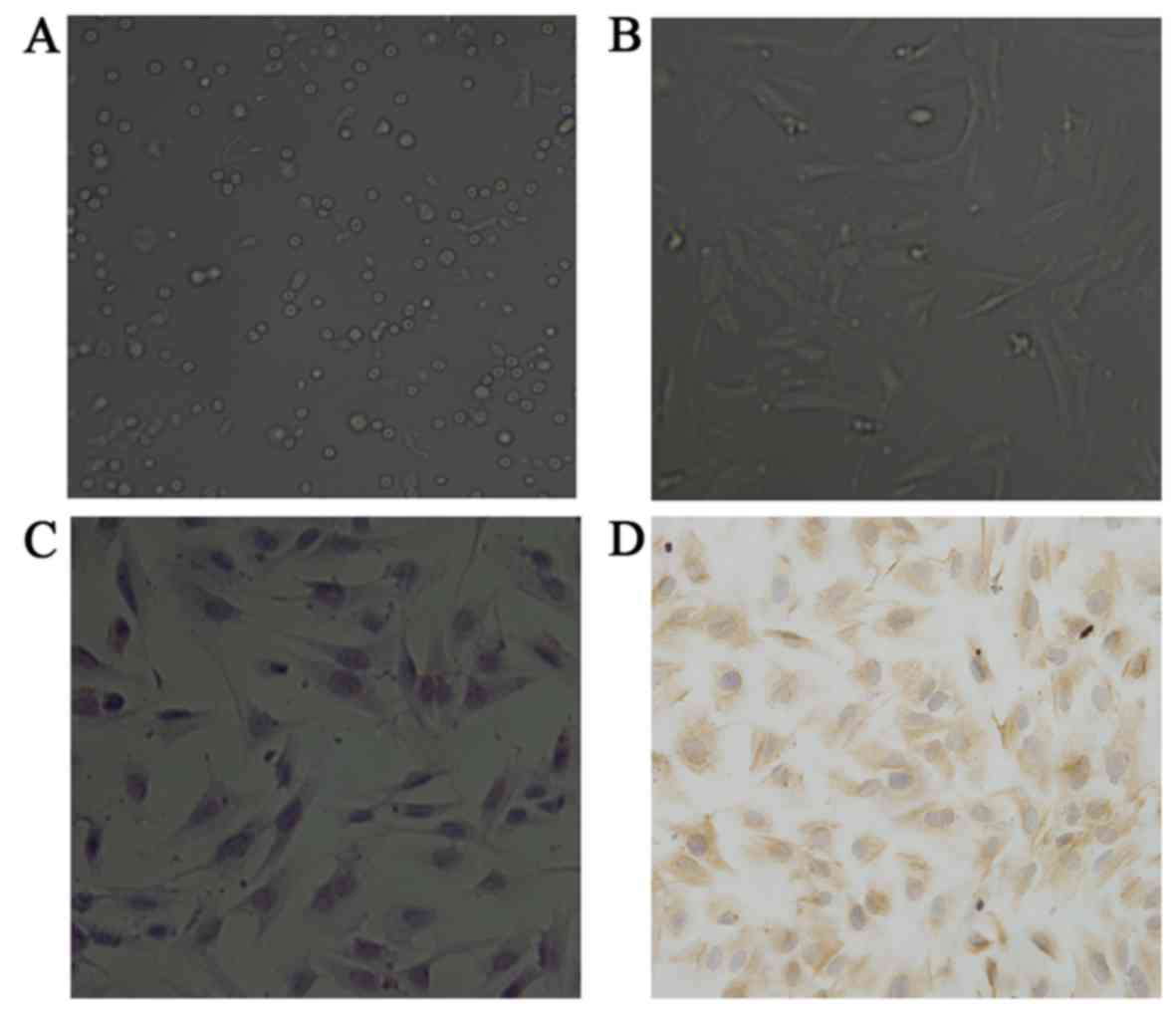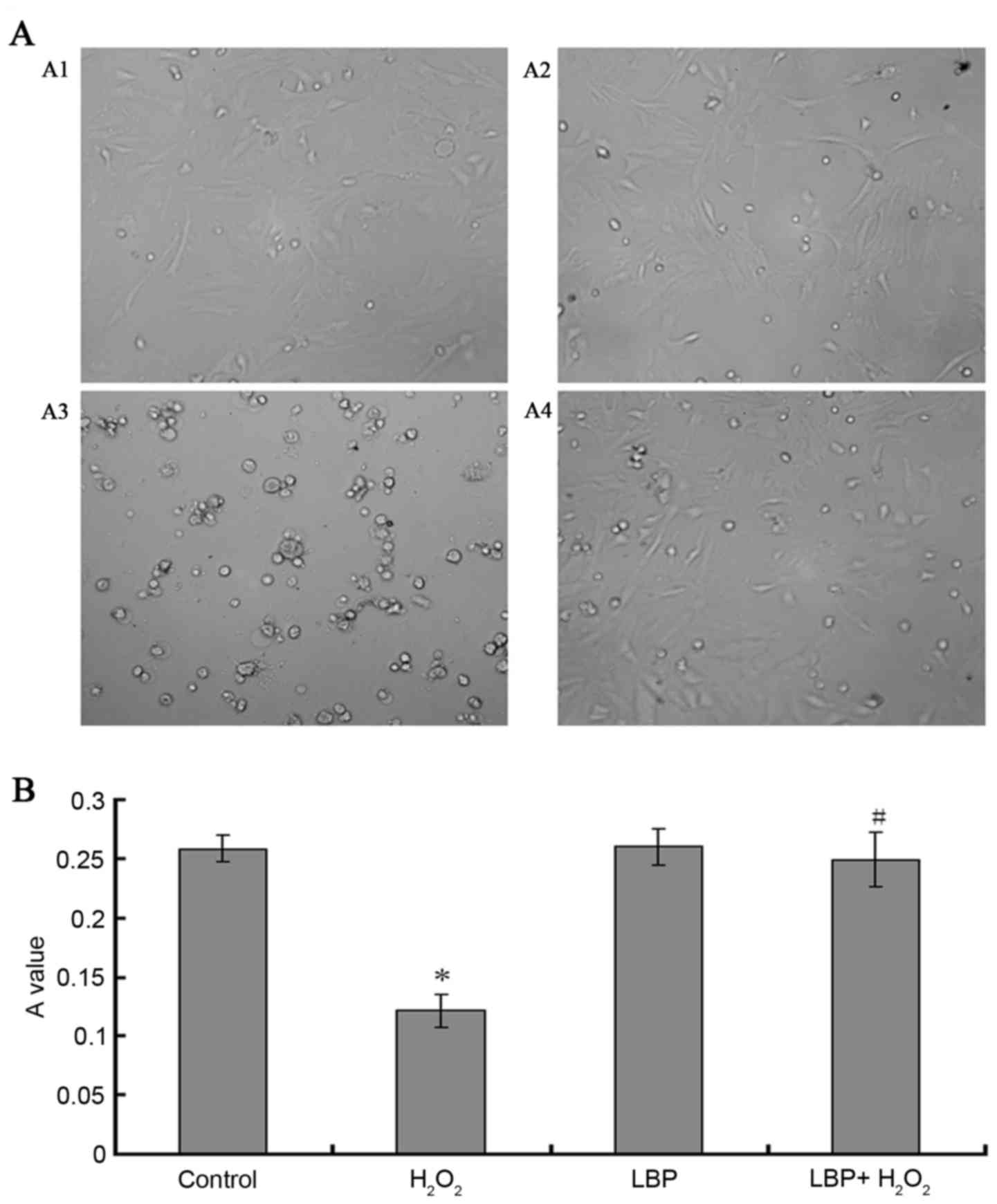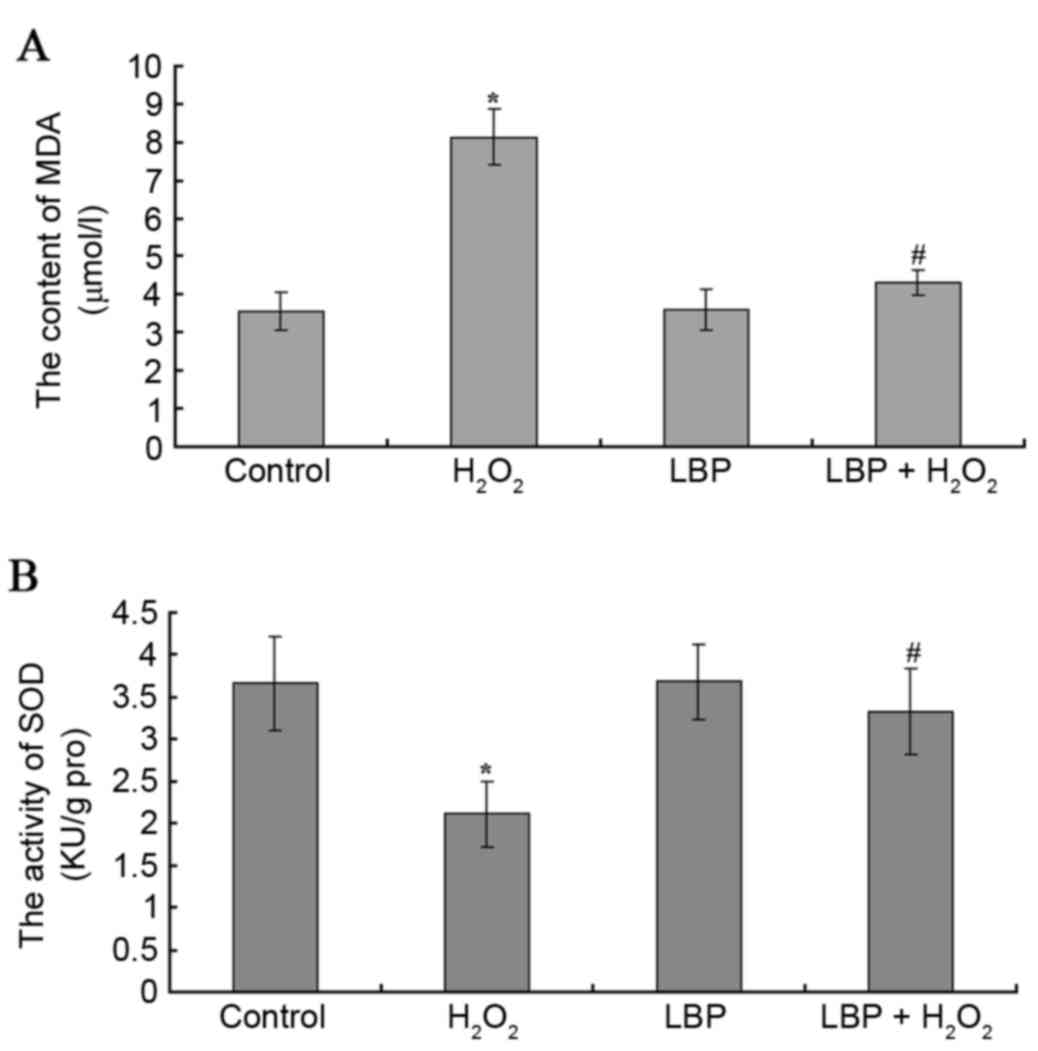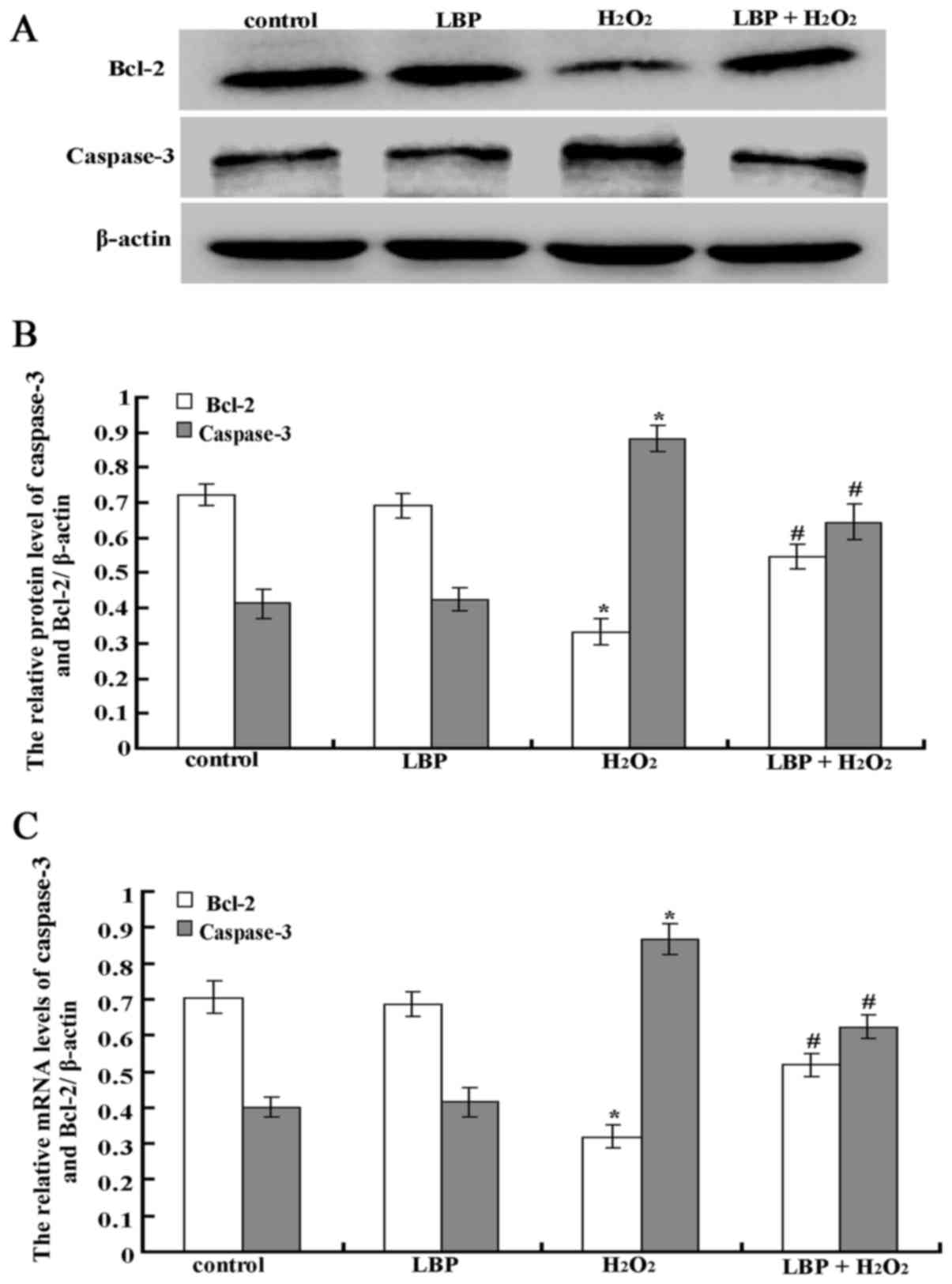|
1
|
Xie JH, Dong CJ, Nie SP, Li F, Wang ZJ,
Shen MY and Xie MY: Extraction, chemical composition and
antioxidant activity of flavonoids from Cyclocarya paliurus
(Batal.) Iljinskaja leaves. Food Chem. 186:97–105. 2015. View Article : Google Scholar : PubMed/NCBI
|
|
2
|
Wang ZJ, Xie JH, Kan LJ, Wang JQ, Shen MY,
Li WJ, Nie SP and Xie MY: Sulfated polysaccharides from Cyclocarya
paliurus reduce H2O2-induced oxidative stress in RAW264.7 cells.
Int J Biol Macromol:. 80:410–417. 2015. View Article : Google Scholar : PubMed/NCBI
|
|
3
|
Chang RC and So KF: Use of anti-aging
herbal medicine, Lycium barbarum, against aging-associated
diseases. What do we know so far? Cell Mol Neurobiol. 28:643–652.
2008. View Article : Google Scholar : PubMed/NCBI
|
|
4
|
Li XM, Ma YL and Liu XJ: Effect of the
Lycium barbarum polysaccharides on agerelated oxidative stress in
aged mice. J Ethnopharmacol. 111:504–511. 2007. View Article : Google Scholar : PubMed/NCBI
|
|
5
|
Mao F, Xiao B, Jiang Z, Zhao J, Huang X
and Guo J: Anticancer effect of Lycium barbarum polysaccharides on
colon cancer cells involves G0/G1 phase arrest. Med Oncol.
28:121–126. 2011. View Article : Google Scholar : PubMed/NCBI
|
|
6
|
Luo Q, Li Z, Yan J, Zhu F, Xu RJ and Cai
YZ: Lycium barbarum polysaccharides induce apoptosis in human
prostate cancer cells and inhibits prostate cancer growth in a
xenograft mouse model of human prostate cancer. J Med Food.
12:695–703. 2009. View Article : Google Scholar : PubMed/NCBI
|
|
7
|
Du G, Liu L and Fang J: Experimental study
on the enhancement of murine splenic lymphocyte proliferation by
Lycium barbarum glycopeptide. J Huazhong Univ Sci Technolog Med
Sci. 24:518–520. 2004. View Article : Google Scholar : PubMed/NCBI
|
|
8
|
Amagase H and Nance DM: A randomized,
double-blind, placebo-controlled, clinical study of the general
effects of a standardized Lycium barbarum (Goji) juice, GoChi. J
Altern Complement Med. 14:403–412. 2008. View Article : Google Scholar : PubMed/NCBI
|
|
9
|
Potterat O: Goji (Lycium barbarum and L.
chinense): Phytochemistry, pharmacology and safety in the
perspective of traditional uses and recent popularity. Planta Med.
76:7–19. 2010. View Article : Google Scholar : PubMed/NCBI
|
|
10
|
Wu SJ, Ng LT and Lin CC: Antioxidant
activities of some common ingredients of traditional Chinese
medicine, Angelica sinensisLycium barbarum and Poria cocos.
Phytother Res. 18:1008–1012. 2004. View
Article : Google Scholar : PubMed/NCBI
|
|
11
|
Luo Q, Cai Y, Yan J, Sun M and Corke H:
Hypoglycemic and hypolipidemic effects and antioxidant activity of
fruit extracts from Lycium barbarum. Life Sci. 76:137–149. 2004.
View Article : Google Scholar : PubMed/NCBI
|
|
12
|
Xiao J, Liong EC, Ching YP, Chang RC, So
KF, Fung ML and Tipoe GL: Lycium barbarum polysaccharides protect
mice liver from carbon tetrachloride induced oxidative stress and
necroinflammation. J Ethnopharmacol. 139:462–470. 2012. View Article : Google Scholar : PubMed/NCBI
|
|
13
|
Marland S and Marklund G: Involvement of
the superoxide anion radical in the autoxidation of pyrogollol and
a convenient assay for super oxide dismutase. Eur J Biochem.
47:469–474. 1974. View Article : Google Scholar : PubMed/NCBI
|
|
14
|
Yagi K: A simple fluorometric assay for
lipoperoxide in blood plasma. Biochem Med. 15:212–215. 1976.
View Article : Google Scholar : PubMed/NCBI
|
|
15
|
Livak KJ and Schmittgen TD: Analysis of
relative gene expression data using real-time quantitative PCR and
the 2(−Delta Delta C(T)) Method. Methods. 25:402–408. 2001.
View Article : Google Scholar : PubMed/NCBI
|
|
16
|
Li GR: Study on isolation Lycium barbarum
polysaccharides and its effect on anti-active oxygen free radicals.
Chin J Mod Appl Pharm. 12:94–96. 2002.(In Chinese).
|
|
17
|
Wang JH, Wang HZ, Zhang M and Zhang SH:
Anti-aging function of poly saccharides from fructus lycii. J Acta
Nutrimenta Sinica. 12:189–4191. 2002.(In Chinese).
|
|
18
|
Wu H, Guo H and Zhao R: Effect of Lycium
barbarum polysaccharide on the improvement of antioxidant ability
and DNA damage in NIDDM rats. Yakugaku Zasshi. 126:365–371. 2006.
View Article : Google Scholar : PubMed/NCBI
|
|
19
|
Li XM: Protective effect of Lycium
barbarum polysaccharides on streptozotocin-induced oxidative stress
in rats. Int J Biol Macromol. 40:461–465. 2007. View Article : Google Scholar : PubMed/NCBI
|
|
20
|
Luo Q, Li Z, Huang X, Yan J, Zhang S and
Cai YZ: Lycium barbarum polysaccharides: Protective effects against
heat-induced damage of rat testes and H2O2-induced DNA damage in
mouse testicular cells and beneficial effect on sexual behavior and
reproductive function of hemicastrated rats. Life Sci. 79:613–621.
2006. View Article : Google Scholar : PubMed/NCBI
|
|
21
|
Lin MT and Beal MF: Mitoehondrial
dysfunction and oxidative stress in neurodegenerative diseases.
Nature. 443:787–795. 2006. View Article : Google Scholar : PubMed/NCBI
|
|
22
|
Jelie S, Padeletti M, Kawtt SM, Higgins C,
Canfield SM, Onat D, Colombo PC, Basner RC, Factor P and LeJemtel
TH: Inflammation, oxidative stress, and repair capacity of the
vascular endothelium in obstructive sleep apnea. Circulation.
117:2270–2278. 2008. View Article : Google Scholar : PubMed/NCBI
|
|
23
|
Starke PE and Farber JL: Endogenous
defenses against the cytotoxicity of hydrogen peroxide in cultured
rat hepatocytes. J Biol Chem. 260:86–92. 1985.PubMed/NCBI
|
|
24
|
Suen DF, Norris KL and Youle RJ:
Mitoehondrial dynamies and apoptosis. Genes Dev. 22:1577–1590.
2008. View Article : Google Scholar : PubMed/NCBI
|
|
25
|
Cimmino A, Calin GA, Fabbri M, Iorio MV,
Ferracin M, Shimizu M, Wojcik SE, Aqeilan RI, Zupo S, Dono M, et
al: miR-15andmiR-16 induce apoptosis by targeting Bcl-2. Proc Natl
Acad Sci U S A. 102:13944–13949. 2005. View Article : Google Scholar : PubMed/NCBI
|
|
26
|
Heath-Engel H, Chang N and Shore G: The
endoplasmic reticulum in apoptosis and autophagy: Role of the Bcl-2
protein family. Oncogene. 27:6419–6433. 2008. View Article : Google Scholar : PubMed/NCBI
|
|
27
|
Fan TJ, Han LH, Cong RS and Liang J:
Caspase family proteases and apoptosis. Acta Biochim Biophys Sin
(Shanghai). 37:719–727. 2005. View Article : Google Scholar : PubMed/NCBI
|
|
28
|
Dirks AJ and Lecuwenburgh C: Aging and
lifelong calorie restriction result in adaptations of skeletal
muscle apoptosis repressor, apoptosis-inducing factor, X-linked
inhibitor of apoptosis, caspase-3, and caspase-12. Free Radic Biol
Med. 36:27–39. 2004. View Article : Google Scholar : PubMed/NCBI
|
|
29
|
Mazumder S, Plesca D and Almasan A:
Caspase-3 activation is a critical determinant of genotoxie
stress-induced apoptosis. Methods Mol Biol. 414:13–21.
2008.PubMed/NCBI
|













